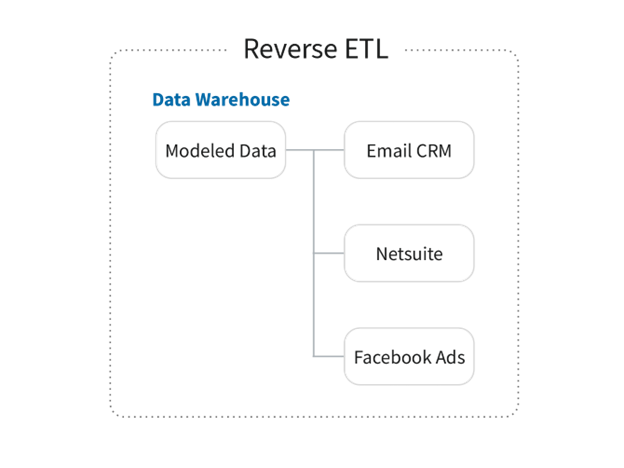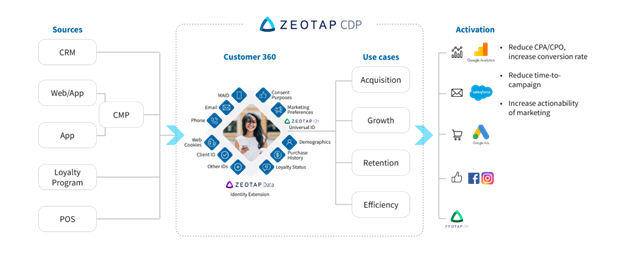Partner Content
Data is the lifeblood of modern enterprises. Companies make considerable investments into collecting, centralising and organising customer data. It includes pulling data from multiple sources, executing a multi-step extract, transform and load (ETL) process, cleaning it, integrating it and reformatting it. Once the data is cleaned and centralised in a data warehouse, then comes the next step of actually using the data by other systems and external platforms.
With the revolution of cloud data warehouses and ETL, it became easy for IT professionals to load data as-is into a cloud data warehouse and transform it. However, the real value comes not from just centralising and cleaning the data, but from taking the curated data and distributing specific data into select applications.

What does Reverse ETL have to offer?
Reverse ETL consists of tools and technologies enabling cleaned data from a data warehouse to be pushed to business applications. The rise of such tools is driven by the companies to get value out of their data warehouse projects, where the data is collected but is accessible only to the IT or the Data Analyst teams.
Making use of advanced cloud technology and greatly depending on ETL processes, IT teams often build their own centralised data lakes. Then comes the belief that all they need to get value out of their data is to implement a Reverse ETL tool.
What they fail to understand is that though deploying a Reverse ETL-based solution can look deceptively simple, the operational overhead required to set up and sync data with other platforms can be very onerous. These tools require technical expertise to set up and manage. Say you want to create customer journeys or do complex segmentation—you'll likely need someone who knows how to code SQL at an expert level. To top this up, there’s also a problem with real-time data as data warehouses collect customer interactions as batch ingestions.
Here is where a customer data platform (CDP) comes into play.

Resorting to a CDP for the complete picture
A customer data platform (CDP) is a data management framework designed to collect, unify and activate customer data from multiple sources. CDPs create a single customer view, which you can use for segmentation, personalisation and omnichannel marketing.
- The CDPs allow easy methods for data collection both native methods like web/app SDKs as well as from other products as well. The data collection not only includes events from omnichannel touchpoints, CRM, service applications, data warehouses and other sources but also 3P cookie syncing enabling customers to broaden their reach in the ad tech platforms. For Reverse ETL to work, the company would need to implement comprehensive data collection methods from different sources into their data warehouses, creating a significant burden on the IT teams, which CDPs provide Out of the Box.
- CDPs provide powerful tools for the unification and enrichment of customer profiles. Powerful ID strategy and unification capabilities provided by Zeotap using patented technologies enable brands to create unified profiles of both unknown and unknown users while at the same time maintaining the high quality and fidelity of IDs. Data warehouses, while hosting all of the data from different applications, would still need custom logic to be built by the brands for unifying their data, which would be simplistic at best.
- CDPs ingest, process and activate data in real-time to power personalisation and orchestration use cases. ETL processes have a considerable time lag for data collection and processing and the data can become stale by the time it is pushed to the downstream systems by using Reverse ETL tools.
- CDPs like Zeotap provide a very easy-to-use interface to segment the audiences for activation where marketers need not understand the underlying data model. Reverse ETL products like HighTouch and Census, while providing an interface, require specialized SQL skills and complete knowledge of the underlying data model and attributes. They extract data by using SQL queries still creating many dependencies on the IT and data teams and cannot be operated by marketers. Let's face it, the data models and naming conventions in a data warehouse are not the cleanest and require a lot of context to understand what each field in different tables imply.
- CDPs provide consent orchestration capabilities enabling only consented activation of data across all channels. Reverse ETL tools need users to apply consent-specific field filters in data for each data push.
- Lastly, Zeotap provides OOTB connectors from databases like Snowflake and BigQuery and to 200+ integrations enabling not just “Reverse ETL” but also enriching customer profiles and supporting real-time and batch activations of the data.
Reverse ETL is a simplistic tool for data syncs, but what the enterprise companies need is a full toolkit of a CDP to be successful in all their use cases.
